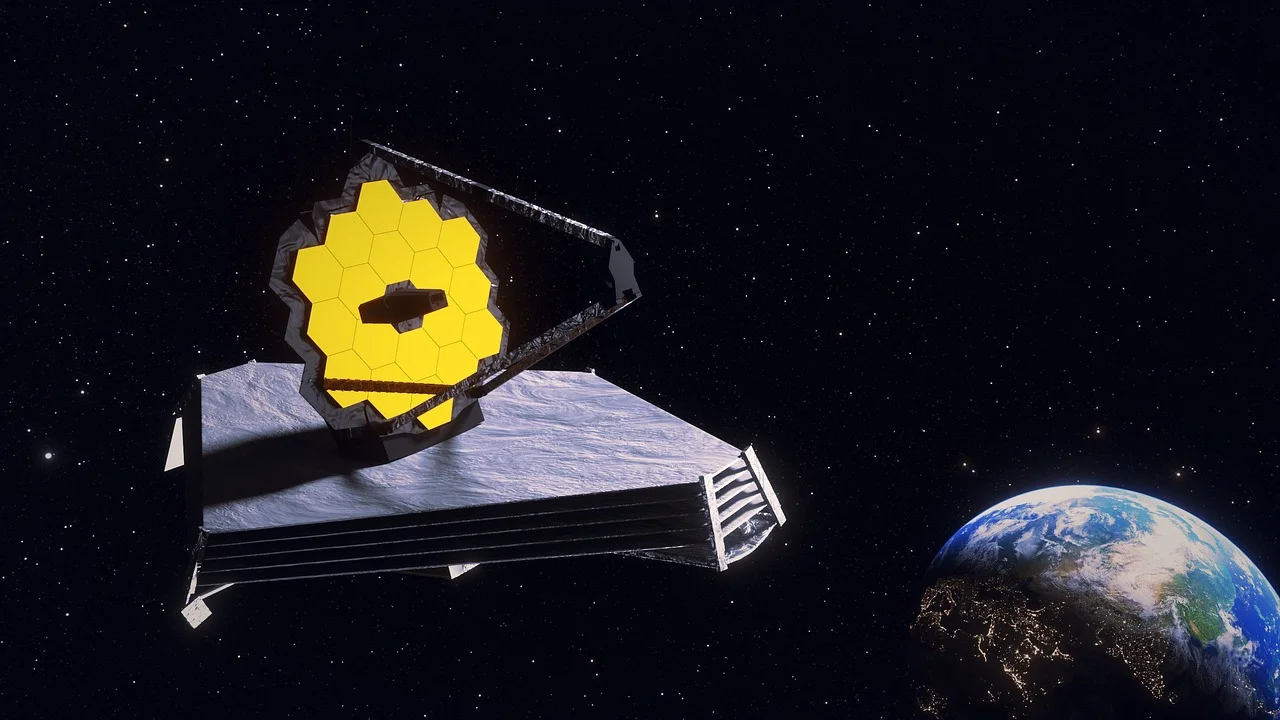The James Webb Space Telescope (JWST) stands as a technological marvel that has captured the imagination of the scientific community and the general public alike. With its successful launch, this telescope promises to take us to new depths in the exploration of the cosmos. In this article, we will delve into the details behind JWST—its development, capabilities, and how it is poised to revolutionize our understanding of the universe.
Development of the James Webb Space Telescope

In the heart of deep space, the JWST rises as a monument to human ingenuity. The project originated as an international collaboration between NASA, ESA, and CSA. Unlike the Hubble Space Telescope, the JWST was designed to operate in the near-infrared, enabling it to capture images and data from objects beyond the visible spectrum. With a primary mirror composed of 18 hexagonal gold segments, the JWST offers exceptional resolution and unparalleled observational capacity.
Price of the James Webb Space Telescope
The James Webb Space Telescope project comes with a significant financial investment. The total cost of the project, including development, launch, and operation, is estimated to be around 10 billion USD. This substantial funding reflects the ambitious nature of the mission and its potential to revolutionize our understanding of the cosmos. While the price tag may be high, the scientific discoveries and insights that JWST is poised to deliver make it a worthwhile endeavor in advancing our knowledge of the universe.
Launch and Orbit
On December 25, 2022, the JWST was successfully launched into space aboard an Ariane 5 rocket. It now resides in a unique orbit known as the Lagrange Point L2, situated about 1.5 million kilometers from Earth. This distinctive position allows the telescope to remain stable and cold, essential for capturing the infrared radiation emitted by celestial objects.
Scientific Objectives
The JWST boasts a series of thrilling scientific objectives. Among the most captivating is its ability to observe the formation of galaxies and stars in the early universe. Additionally, its capacity to analyze exoplanetary atmospheres could shed light on the possibility of life on other planets. These investigations have the potential to fundamentally alter our understanding of our place in the cosmos.
Instruments and Advanced Technology
Equipped with four main instruments, the JWST is poised to unveil the universe's deepest secrets. Its Near Infrared Camera (NIRCam) and Near Infrared Spectrograph (NIRSpec) allow detailed observations of distant objects. The Mid-Infrared Instrument (MIRI) enables the analysis of thermal and chemical properties of objects. These instruments, supported by innovative technology, render the JWST an invaluable tool for astronomy.
Challenges and Success
The path to success was not without challenges. The JWST project faced significant delays and cost overruns. However, these hurdles were overcome through determination and international collaboration. The result is a telescope that is ready to transform how we view the cosmos.
Impact on Astronomy and Science
The JWST is on the cusp of revolutionizing our understanding of the universe. Its observations could shed light on the nature of dark matter, planet formation, and the cosmic history. With its ability to peer beyond what is visible, the JWST could reveal cosmic secrets that have been shrouded for eons.
International Collaboration
International collaboration has been pivotal to the JWST project. Space agencies from around the world, including NASA, ESA, and CSA, have worked together to make this telescope a reality. This collaboration has not only enhanced the science behind JWST but has also strengthened ties between nations.
Future Expectations
The expectations for the JWST are monumental. Scientists anticipate astonishing discoveries across a range of fields, from cosmology to astrobiology. The JWST will continue to transmit invaluable data, enriching our understanding of the vastness of the universe.
Conclusion
In a world where stars remain a source of wonder and mystery, the James Webb Space Telescope offers an unprecedented window into the cosmos. With its unique ability to explore the near-infrared, this telescope will lead us to new discoveries and insights that transcend our current expectations.
Frequently Asked Questions
- What is the main difference between the Hubble Space Telescope and JWST?The JWST operates in the near-infrared, allowing observations beyond the visible spectrum, unlike the Hubble, which focuses on visible and ultraviolet light.
- What are the most exciting scientific objectives of JWST? JWST will focus on studying the formation of galaxies and early stars, as well as analyzing exoplanetary atmospheres for signs of life.
- Where does the name "James Webb" for the James Webb Space Telescope come from? The James Webb Space Telescope is named after James E. Webb, who was an influential NASA administrator. During his tenure, NASA played a pivotal role in the Apollo program that led to the Apollo 11 moon landing. The name is a tribute to his leadership and contributions to space exploration.
- Which space agencies are involved in the JWST project? The JWST project is a collaboration among NASA, ESA (European Space Agency), and CSA (Canadian Space Agency).
- What is the role of international collaboration in astronomical research? International collaboration in projects like JWST allows the combination of resources, knowledge, and diverse perspectives to achieve significant advancements in astronomical research.
Deja una respuesta


IMPRESCINDIBLES DE LA SEMANA